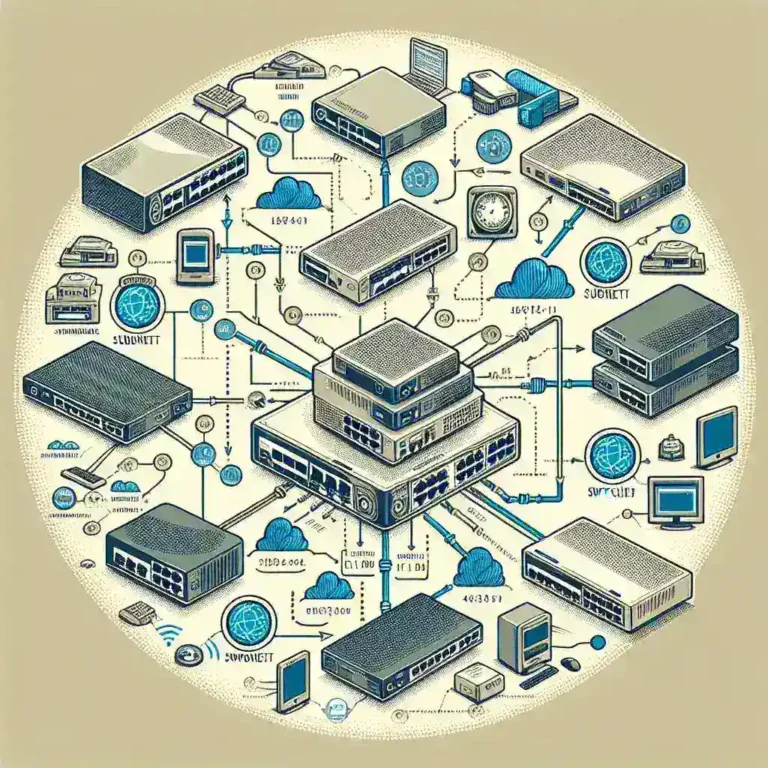Creating network documentation is a critical task for any IT professional. It helps manage, troubleshoot, and secure the network. Even though it might seem time-consuming, comprehensive network documentation ensures that your network operates smoothly and can significantly reduce downtime in the event of an issue.
Why Network Documentation is Important?
Network documentation is essential for multiple reasons:
- Troubleshooting: Detailed documentation can assist in quickly isolating and fixing network issues.
- Planning and Upgrades: It facilitates network expansion and upgrades by providing a clear layout of the current setup.
- Security: Proper documentation helps in identifying potential vulnerabilities and securing the network.
- Compliance: Many industries require detailed documentation to comply with regulations and standards.
Key Components of Network Documentation
Comprehensive network documentation should include the following elements:
1. Network Topology
A visual representation of the network infrastructure, showing devices and their connections.
2. IP Address Management
A detailed list of all IP addresses in the network, their allocations, and statuses.
3. Hardware Inventory
Information about all network devices, including routers, switches, servers, and firewalls.
4. Software Inventory
A record of all software used in the network, including operating systems, applications, and firmware versions.
5. Configuration Files
Backup copies of device configuration files to restore settings if needed.
6. Network Policies
Documentation of network policies such as security protocols, user access levels, and backup procedures.
7. Network Diagrams
Visual diagrams of the network layout, including logical and physical representations.
Steps to Create Network Documentation
Step 1: Define the Scope
Determine what needs to be documented. Whether it’s for a specific segment of the network or the entire infrastructure, defining the scope is crucial.
Step 2: Gather Information
Collect all necessary information about the network. Interviewing stakeholders, reviewing existing documents, and using network mapping tools can be helpful.
Step 3: Create Network Topology
Use network topology software to create detailed diagrams of the network layout. Include all devices, connections, and data flow paths.
Step 4: Document IP Addresses
List all IP addresses and their allocations. Maintain a detailed register that includes IP address ranges, assignments, and subnets.
Step 5: Inventory Hardware and Software
Compile comprehensive lists of all hardware and software in the network. Include details like device names, models, and versions.
Step 6: Backup Configuration Files
Ensure that copies of all device configuration files are regularly backed up and stored securely.
Step 7: Outline Network Policies
Document all network policies, including security measures, user access controls, and disaster recovery plans.
Step 8: Create Network Diagrams
Develop and include both logical and physical network diagrams. These diagrams should be easy to understand and regularly updated.
Step 9: Regular Updates and Reviews
Network documentation should be a living document. Regularly review and update it to reflect any changes in the network.
| Network Documentation Components | Description |
|---|---|
| Network Topology | Visual representation of the network infrastructure |
| IP Address Management | List of IP addresses, their allocations, and statuses |
| Hardware Inventory | Information about network devices |
| Software Inventory | Record of all software used in the network |
| Configuration Files | Backup copies of device configuration files |
| Network Policies | Documentation of network security, access, and backup policies |
| Network Diagrams | Visual diagrams of the logical and physical network layout |
Best Practices for Effective Network Documentation
- Consistency: Keep the format and structure consistent throughout the documentation.
- Clarity: Use clear and concise language. Avoid jargon and overly technical terms.
- Accessibility: Ensure that the documentation is easily accessible to authorized personnel.
- Security: Protect the documentation with appropriate access controls to prevent unauthorized access.
- Automation: Utilize network documentation tools and software to automate and streamline the documentation process.
Effective network documentation is crucial for the smooth operation and security of any network. By following the steps and best practices outlined above, you can create comprehensive documentation that serves as an invaluable resource for managing and maintaining your network.



